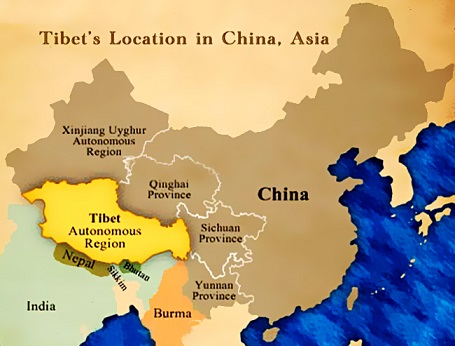Focus: GS-II International Relations
Why in news?
The U.S. and China imposed visa restrictions on each other over their disagreement on Tibet, adding fuel to the diplomatic fire between the superpowers.
Details
China announced its curbs on people from the U.S. who “behave badly” on Tibet-related issues.
U.S. Moves
- U.S. Secretary of State had announced visa restrictions for a certain group of Chinese officials under the Reciprocal Access to Tibet Act.
- According to U.S. Beijing has continued systematically to obstruct travel to the Tibetan Autonomous Region (TAR) and other Tibetan areas by U.S. diplomats and other officials, journalists, and tourists, while Chinese officials and other citizens enjoy far greater access to the United States.
- Amid high tension with China, the U.S. has increasingly been issuing such visa sanctions, earlier taking action over Beijing’s clampdown on free expression in Hong Kong and its incarceration of some one million Uighurs.
- The Tibet action comes under a 2018 law passed by Congress that aims to pressure China over its tight restrictions in the Himalayan region.
- The International Campaign for Tibet, a rights advocacy group close to the Dalai Lama, welcomed the implementation of the law.
- The U.S. action comes right after the 85th birthday of the Dalai Lama, who has spent most of his life in exile in India.
- The campaign said it saw momentum, pointing to a recent joint call by 57 European parliamentarians from 19 countries to set up their own version of the Reciprocal Access to Tibet Act.
China Moves
- China expressed firm opposition to the move and urged the U.S. to immediately stop interfering in China’s internal affairs through Tibet-related issues.
- Beijing has largely barred foreign journalists from visiting Tibet since 2008.
Tibet

Geography
- Tibet is a region on the Tibetan Plateau in Asia, spanning to nearly a quarter of China’s territory.
- It is the traditional homeland of the Tibetan people as well as some other ethnic groups.
- Tibet is the highest region on Earth, with an average elevation of 4,900 metres. The highest elevation in Tibet is Mount Everest.
History
- From 1912 until the founding of the People’s Republic of China in 1949, no Chinese government exercised control over what is today China’s Tibet Autonomous Region (TAR).
- Many Tibetans insist they were essentially independent for most of that time and have protested what they regard as China’s rule imposed after the People’s Liberation Army occupied TAR in 1950.
- The Dalai Lama’s government alone ruled the land until 1951. Tibet was not “Chinese” until Mao Zedong’s People’s Liberation Army (PLA) marched in and made it so.
India and Tibet
- Apart from the border disputes, another major irritant for China has been over the Dalai Lama, who enjoys a spiritual status in India.
- China considers Dalai Lama a separatist, who has great influence over Tibetans. It must be mentioned that Dalai Lama gave up his support for Tibetan independence in 1974, and only wants China to stop repression against the community.
- The Government of India has built special schools for Tibetans that provide free education, health care, and scholarships. There are a few medical and civil engineering seats reserved for Tibetans.
- While India’s role in the rehabilitation of Tibetan refugees has been criticised by China, it has drawn praise from international bodies and human rights groups.
Click Here to read more about the ‘Five Fingers’ of Tibet policy (2nd Article)
-Source: The Hindu




